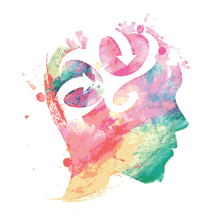
TAKE CHARGE OF YOUR MENTAL HEALTH RECOVERY
RECOVERY PROTOCOL STREAMS
-OVERVIEW-
-This is My Life to Live-
It is recommended that the reader print the “Flash Drive Forms” and “Terms and Definitions” page prior to reviewing this online educational platform to aid one’s comprehension and understanding.
There is an assumption that each person has reviewed the full content on this site before proceeding.
With “Recovery Based Conversations” (R.B.C.) you are building stories of “agency” and “hopefulness” which are out of awareness and bring them into prominence. These are stories that are different from the illness stories of suffering and pain.
–Why continue reinforcing a neural pathway for “The Illness” when one can now build generative neural pathways-
Such stories of “personal agency” and “hopefulness” are massaged through rounds of R.B.C. These narratives intend to shape and grow the recovery mindset and massage the psychology of recovery for a person in the treatment. From these tellings and recountings, choices emerge and decisions can be made regarding stepping stones towards making a recovery possible.
The exciting flexibility of the “Recovery Protocol Breakthrough” lies in the value of offering consumers three program streams for recovery-based conversations: 1) Entry Core Stream: 2) Secondary Core Stream: and 3) Advanced Core Stream. Each stream level builds upon each other, yet they operate separately as their own programs. Each stream offers a potent influence towards supporting and elevating a person’s psychology of recovery in raising expectancies of “hope” and capitalizing on “agency”.
1) Entry Core Stream (first level): This is the base foundation for practicing this Recovery Protocol Breakthrough
2) Secondary Core Stream (secondary level): This stream builds upon the entry level with a primary focus on identifying a person’s vision that holds a recovery alive
3) Advanced Core Stream (third level ): This stream builds upon the previous two levels with elevated and advanced conversations on generating recovery.
There are two main objectives for having three program streams:
a) they offer stages of progression, from low octane to high octane recovery protocol.
b) they offer a choice of stages that meet one’s recovery needs, progression and results. If the entry core requires further support over time, the secondary core stream is the next step up. If the tandem practice of these two cores requires further support, then stepping up to the advanced core is warranted. Once a recovery is in full motion and established, scaling back the core levels can occur, and if
not warranted, cease altogether.
The thrust of all streaming levels is to allow a person to break away from the hold of “The Illness” to a degree that lessens Illness Centered Living while growing the capacity to live from a Person Directed Life, position. This is where recovery meets treatment-
Here we find, the reliance on the pill alone to make a psychiatric recovery is now partnered with a person’s “psychology of recovery” for making a person-directed life a reality.
Be patient with implementing the “Recovery Protocol Breakthrough” as there is a learning curve for both you and the treatment team. Think of what it was like, at first, to learn how to drive. At first, driving feels foreign and unnatural behind the wheel. The operation of the vehicle is not fluid in nature but mechanical and jerky. There is so much to attend to on the road that it is easy to become very overwhelmed. However, over time, familiarity sets in and the ease of driving shifts from being primarily rigid and mechanical to becoming increasingly relaxed and smoother in operation. The rewards in the end outweigh the frustrations of being a learner.
Rhythm & Practice
The practice of each core stream chosen within the “Treatment Room” occurs at least a minimum of once every two appointment periods. If one is involved with more than one core program, decide at the start of the appointment which stream shall be the focus. Only one core stream is practiced in an appointment.
Each core stream in play, during the treatment room time, is allotted between 15 minutes to 30 minutes, at minimum.
“We are all in this together.”
-The Recovery Specialist
